You don’t buy carpet to gamble on spills, so a Spot & Spill warranty with free re-treatments or refunds is your hedge. It turns chaos into a scheduled service call, using pro chemistries, dwell times, and moisture controls that DIY can’t match. When stains resist compliant attempts, refund clauses give clean financial closure. Still, coverage limits, response windows, and homeowner prep can make or break outcomes—which is where most buyers get surprised.
What a Spot & Spill Warranty Covers
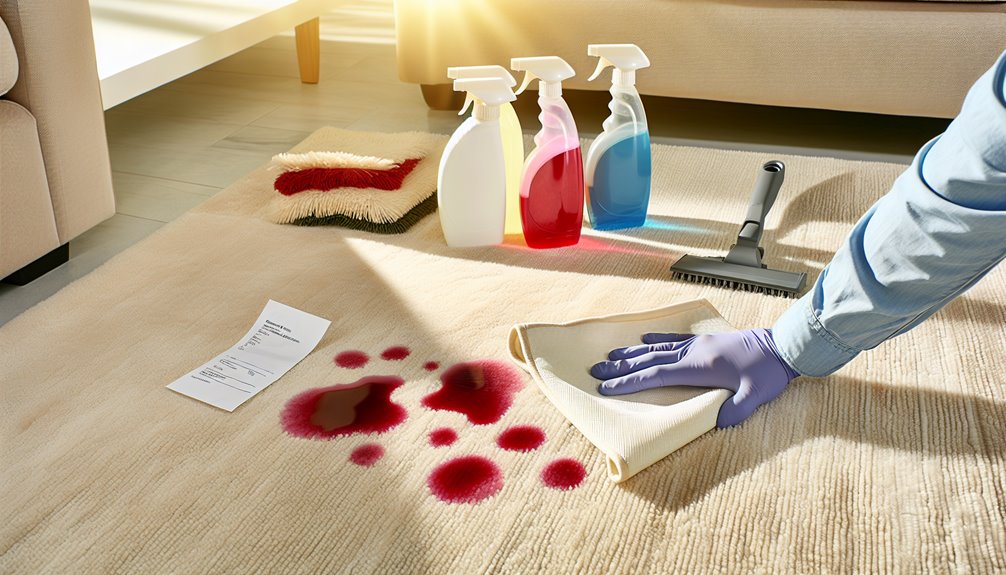
Whether it’s a coffee splash, pet accident, or tracked-in mud, a Spot & Spill Warranty typically covers accidental, localized stains on eligible carpet or upholstery that occur during normal residential use. You’re protected when the spill is promptly reported, the area is accessible, and approved methods are followed. Coverage often excludes bleaching agents, dye transfer, burns, and wear. Documentation of fiber protection, maintenance frequency, and original installation helps validate claims. Technicians evaluate fiber type, backing, and stain longevity to select compliant chemistry. You’ll confirm chemical safety standards, drying times, and re-soiling risk. Pre-existing damage, odor remediation, and structural issues are usually outside scope.
How Free Re-Treatments Reduce Stress and Cost
Often, the promise of free re-treatments eliminates decision fatigue and unexpected out-of-pocket costs by turning a spill into a scheduled service event rather than an emergency. You gain stress reduction because there’s a defined protocol: call, document, schedule, resolve. Technicians diagnose fiber type, stain chemistry, and dwell time, then apply targeted chemistry without upsells. You avoid DIY risks—over-wetting, wick-back, color loss—and protect warranties. Predictable response windows and no-trip-fee policies deliver measurable cost savings, especially across multiple areas or high-traffic facilities. You maintain asset value, uphold hygiene standards your clients notice, and keep operations uninterrupted while your team focuses on serving others.
When Refunds Make Sense After a Failed Treatment
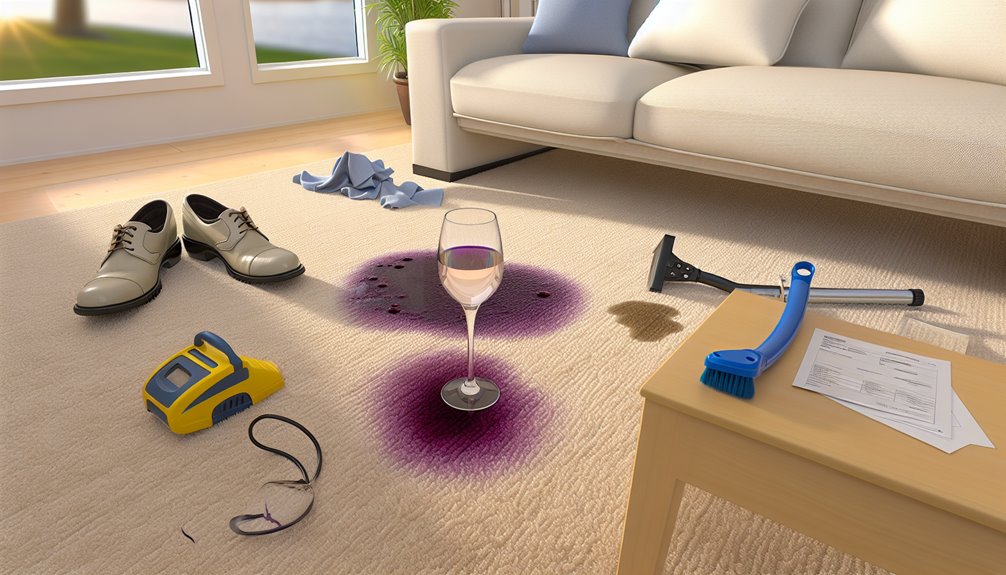
When a stain resists prescribed chemistry, dwell time, and mechanical action, a refund isn’t a courtesy—it’s the correct resolution under a performance warranty. You decide based on pre-inspection notes, fiber ID, pH tolerance, and prior contamination history. If you followed the process matrix and documented dwell and agitation metrics, you’ve met standard of care. Refund thresholds should be explicit: full refund for non-removable stains after compliant attempts; partial refund when appearance improves but falls below agreed benchmarks. Use moisture, reflectance, and colorfastness readings to validate outcomes. Offer customer arbitration when disputes arise, referencing photos, meter logs, and signed expectations.
The Psychology of Providers Who Stand Behind Their Work
Refunds resolve outcomes; mindset sustains reputation. You project provider confidence when you tie your identity to results, not excuses. You calibrate expectations, document conditions, and set measurable targets before you treat. Afterward, you audit performance, own gaps, and activate a re-treatment or refund without friction. That’s service accountability in practice: a closed-loop system where data, not ego, guides decisions.
You don’t fear warranties; you use them to learn. Each claim flags a process variable—chemistry, dwell time, agitation, fiber type, or customer-use pattern. You iterate fast, brief your team, and prevent recurrence. Customers feel protected; your brand compounds trust.
Key Terms and Fine Print to Review Before You Buy
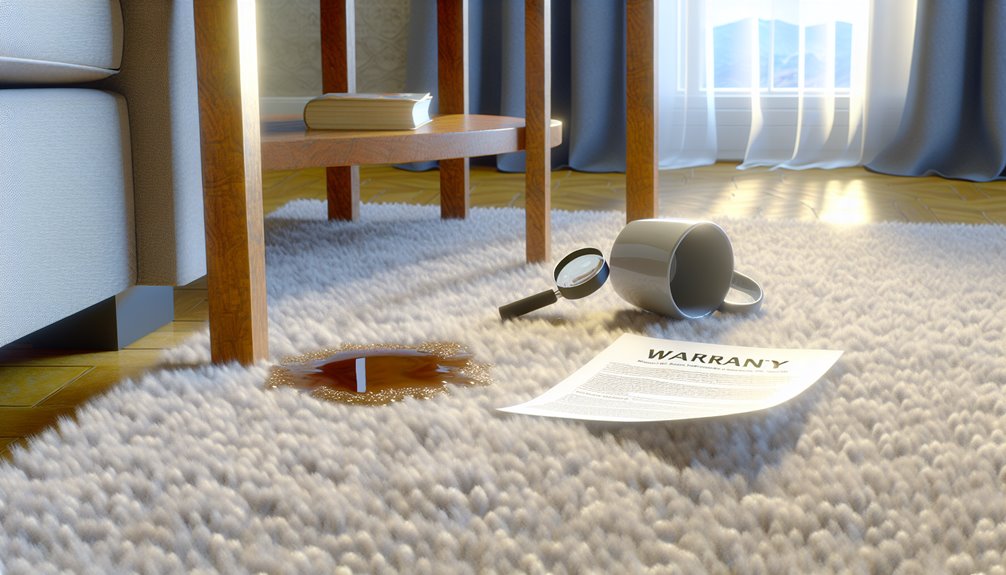
Before you sign a spot-and-spill warranty, dissect the definitions, scope, and triggers that govern coverage. Verify what constitutes a “spot,” “stain,” and “spill,” and whether the warranty tracks material science distinctions—protein, tannin, oil, dye. Confirm response tiers: free re-treatments, refund thresholds, and proration. Timeframes matter—reporting windows, on-site arrival SLAs, and resolution deadlines.
Scrutinize the claim process: documentation required, inspection rights, and approved chemistries. Assure remedies include labor, chemicals, and ancillary drying. Note transferability, term length, renewal cadence, and geographic limits. Validate compatibility with your cleaning protocols and pH ranges. Demand plain-language escalation steps and named points of contact.
Eligibility Requirements and Exclusions to Watch For
Although spot-and-spill warranties look broad, eligibility hinges on strict preconditions and carve-outs that can void your claim. You must document stain origin, apply approved cleaners, and notify the provider within the stated coverage duration. Most programs require proof of professional installation, periodic maintenance, and intact manufacturer labels. Exclusions typically include pet damage, bleach, dyes, bodily fluids, mold, seam spills, and pre-existing conditions. Non-residential use, rental units, and improper ventilation often disqualify claims. Photos and timestamps matter; so do batch numbers and purchase receipts. If you authorize third-party treatments before inspection, you’ll forfeit remedies. Confirm cap limits, tiered fibers, and pad compatibility.
Response Times and Service Windows That Matter
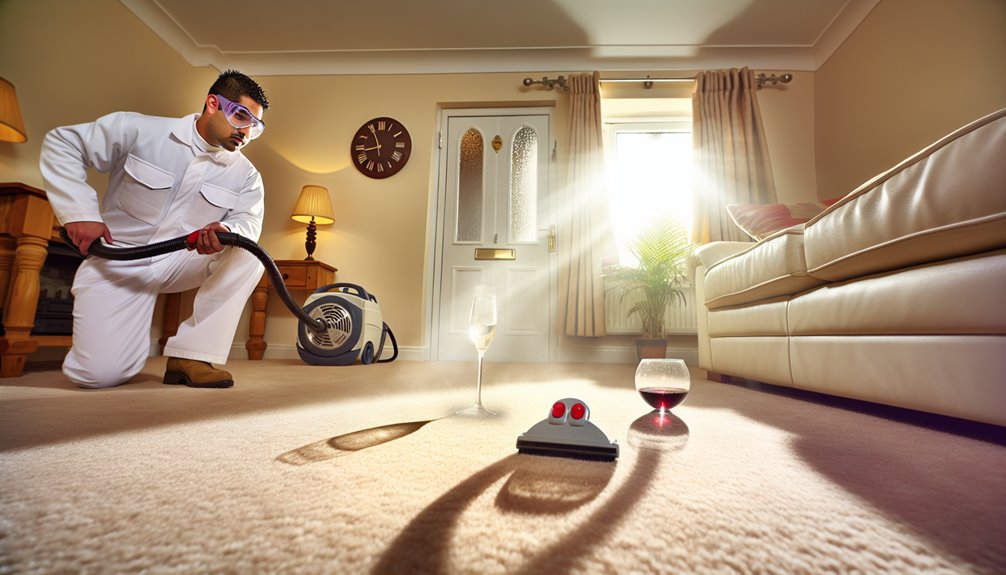
Those eligibility hoops only matter if you act fast enough to preserve coverage. You need a provider that treats spill timelines like triage, committing to a quick response and a defined service window. Ask for clock-start metrics: from claim submission to dispatch, and dispatch to door. Insist on same day arrival for active stains, with a written escalation path if capacity’s tight. Verify appointment flexibility—early, late, and weekend slots—so you can serve your household without gaps. Demand automated ETA updates, technician tracking, and a no-show credit. Measure average first-contact-to-resolution times. When minutes matter, precision scheduling protects both fibers and warranty value.
Proper Homeowner Prep and Aftercare for Best Results
From intake to rinse, your prep and aftercare determine whether a warranty re-treatment restores fibers or sets stains. Before technicians arrive, complete surface prep: clear furniture, pre-vacuum, isolate pets, and note fiber types and prior chemistry. Identify ventilation needs; open paths for airflow, replace HVAC filters if clogged, and disable humidifiers. After service, maintain dwell times, then enable cross-ventilation or low-heat airflow to accelerate drying below 12% moisture. Avoid foot traffic until pile sets; use walk-off mats if access is essential. Don’t apply off-label spotters. Blot, never scrub. Document results with timestamps and photos. Report wicking within 24 hours.
Comparing Warranties Across Providers and Price Points
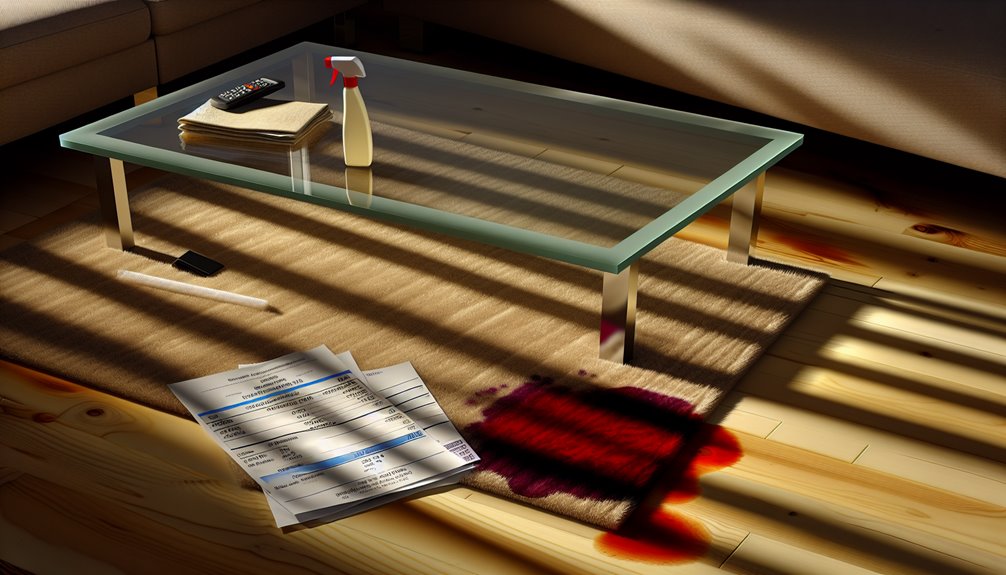
When you compare spot-and-spill warranties, look past headline years and “free re-clean” claims to the operational fine print that drives real value. Map offerings across price tiers, then test how the service guarantees actually trigger. Verify response times, exclusions, and technician authority to approve re-treatments or refunds without delays. Ask how outcomes are measured and documented, so your clients aren’t left waiting.
- Coverage scope: fiber types, stain categories, traffic areas, and pre-existing conditions
- Activation rules: proof-of-purchase, reporting windows, maintenance requirements
- Performance metrics: first-visit resolution rate, average days-to-dispatch
- Financial remedies: refund caps, pro‑rating, and non-discretionary approval paths
Real-World Scenarios: Wine, Pets, and Everyday Spills
Now put the fine print to work against real incidents your clients face: a Syrah splash on solution‑dyed nylon, a pet accident wicking through wool into the backing, or a daily coffee drip that sets in olefin by the break room. You triage fast: blot, neutralize, then invoke free re-treatments. For wine accidents, apply an oxidizing spotter compatible with acid dye blockers; confirm pH and rinse to avoid resoiling. For pet stains, address urea salts and odor sources with enzyme or oxidizer, then sub-surface extract to the pad. Document fiber ID, chemistry used, dwell times, and outcomes—your refund clause covers persistent discoloration.
Conclusion
As the owner of Hydra Clean here in Hattiesburg, MS, I truly understand how stressful it can be when accidents happen. That’s why I’m proud to offer our Spot & Spill warranty, which includes free re-treatments or refunds. I want you to feel at ease knowing that we’re here to help you every step of the way. If you want to learn more about our services and how we can assist you in keeping your carpets looking pristine, please visit myhydraclean.com or give us a call at (601) 336-2411. I look forward to connecting with you and ensuring your home stays beautiful!

